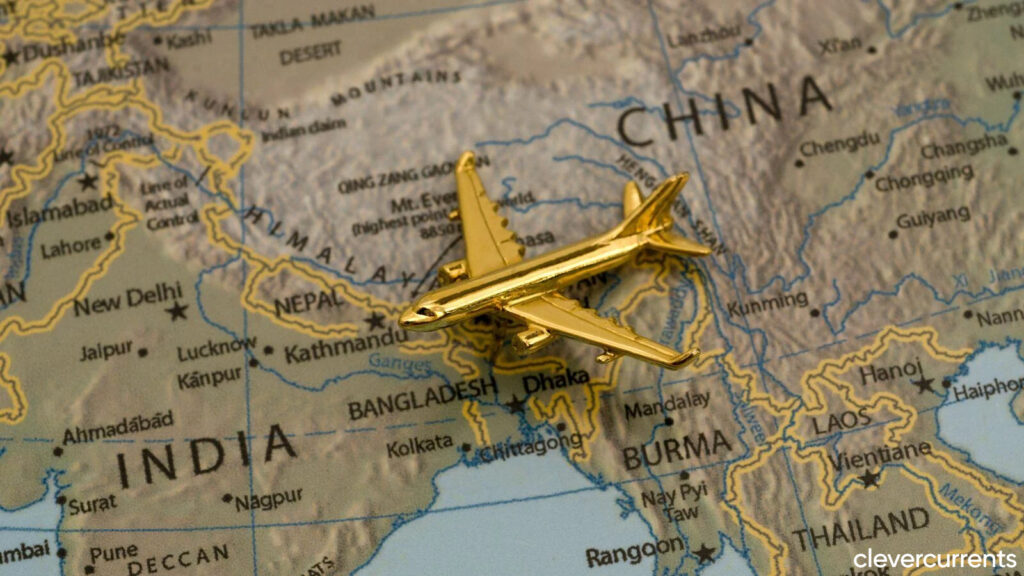In a significant development, India and China have agreed to resume direct passenger flights between their countries, marking the end of a more than five-year hiatus. This step is more than just about aviation: it signals a thaw in bilateral relations and opens up new avenues for trade, tourism and people-to-people contact.
What happened?
-
The suspension of direct flights began in early 2020, triggered by the global COVID-19 pandemic and sharpened by the Galwan Valley clash between the two nations.
-
On 26 October 2025, the Indian carrier IndiGo launched daily non-stop flights from Kolkata (Netaji Subhas Chandra Bose International Airport) to Guangzhou (China).
-
Further routes are planned: a Delhi-Guangzhou service from early November, and the Chinese carrier China Eastern Airlines is expected to operate Delhi-Shanghai flights soon.
-
Diplomatically, this comes after recent high-level engagements: for example, during the Shanghai Cooperation Organisation Summit in Tianjin in August 2025.
Why it matters
1. Economic & trade benefits
With direct air links restored, business travel becomes smoother and faster. The route Kolkata-Guangzhou connects eastern India with a major Chinese manufacturing and export centre, which will help logistics, sourcing and after-sales service.
Also, boosting tourism is a key objective: more Chinese visitors to India, more Indians to China. This helps hotels, services, airlines, as well as cultural exchange.
2. Diplomatic / strategic signals
The flight-resumption acts as a confidence-building measure between the two neighbours. It says: despite unresolved border issues and competition, we are willing to restore normalcy in certain areas. The journey from “suspension” to “restart” reflects gradual improvement in ties.
3. People-to-people and cultural ties
Beyond politics and trade, ordinary people benefit: students, professionals, families, tourism groups. For many Indian-Chinese families or those with connections across the border, this opens up easier mobility. For example, in Kolkata’s Chinatown there is a tangible sense of regained access.
Challenges & caveats
-
Security & strategic concerns: While flights resume, the underlying border dispute remains unresolved. Connectivity is only one layer of the broader relationship. Analysts caution that resumption doesn’t mean full trust yet.
-
Commercial viability: The initial routes may cater to niche segments; full volume will depend on sustained demand, competitive pricing, and regulatory ease.
-
Operational logisticities: Visas, customs, airport coordination, airline bilateral approvals all need smooth functioning for the route to become a truly “normal” link. Both sides acknowledge these issues in their statements.
Implications for India (and for our region)
For India, which is our region (west Maharashtra → India), this opens up a few interesting implications:
-
Indian businesses (including in smaller cities) may find easier access to Chinese markets or supply chains; especially sectors like electronics, renewables, and manufacturing which are globalising.
-
Tourism: Indians wanting to travel to China, or Chinese tourists coming to India, particularly to eastern hubs like Kolkata and perhaps later Mumbai/Delhi, will increase.
-
Air‐connectivity boost: For Indian airlines and airports, this is another international route that opens up, with ripple benefits for allied services (cargo, hospitality, trade fairs).
-
Regional balance: Better India-China ties may influence regional geopolitics (South Asia, Indo-Pacific). For example, with China’s presence in infrastructure and trade, India’s improved connectivity could shape supply-chain decisions.
What to watch next
-
Which additional routes get media clearance? Will Mumbai, Bengaluru link with Chinese hubs like Shanghai, Shenzhen?
-
Will flights bring significant cargo services (not just passenger) between India and China? That can accelerate trade.
-
How visa/immigration processes evolve: more Chinese tourist visas to India, more Indian visitors to China with fewer hurdles.
-
Whether this connectivity shift is part of a deeper normalization (e.g., border trade up, fewer military standoffs), or remains limited to economic/people moves.
-
Market and trade data: will we see uptick in bilateral trade volumes, Indian exports to China, Chinese tourists to India?
Conclusion
The resumption of direct flights between India and China is much more than an aviation story — it’s a micro-symbol of rapprochement, with tangible benefits for trade, travel and ties. However, it should be seen as one step among many required to fully normalise relations. For business people, tourists, students and professionals, this is a welcome opening. But the full payoff will depend on consistent follow-through: operational execution, trust building and broader engagement.

